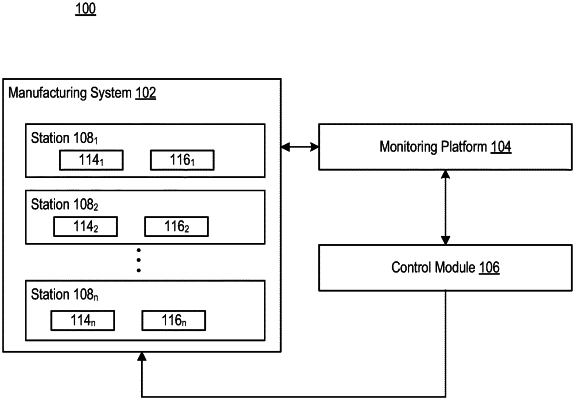| CPC G06T 7/73 (2017.01) [G05B 19/402 (2013.01); G05B 19/40932 (2013.01); G06N 20/00 (2019.01); G06T 2207/30164 (2013.01)] | 17 Claims |

|
1. A manufacturing system, comprising:
a first station and a second station, each of the first station and the second station configured to perform at least one step in a multi-step manufacturing process for a component;
a monitoring platform configured to monitor progression of the component throughout the multi-step manufacturing process; and
a control module configured to dynamically adjust processing parameters of a step of the multi-step manufacturing process to achieve a desired final quality metric for the component, the control module configured to perform operations, comprising:
receiving image data of tooling of the first station, wherein the first station is upstream of the second station;
identifying a set of keypoints on the tooling from the image data, the set of keypoints corresponding to position information of the tooling during processing at the first station;
projecting, by a machine learning model, a final quality metric for the component, based on the set of keypoints, the final quality metric representing a metric quality of the component that cannot be measured until the multi-step manufacturing process is complete; and
assigning the component to a class of components based on a comparison between the projected final quality metric and a canonical final quality metric for the component.
|